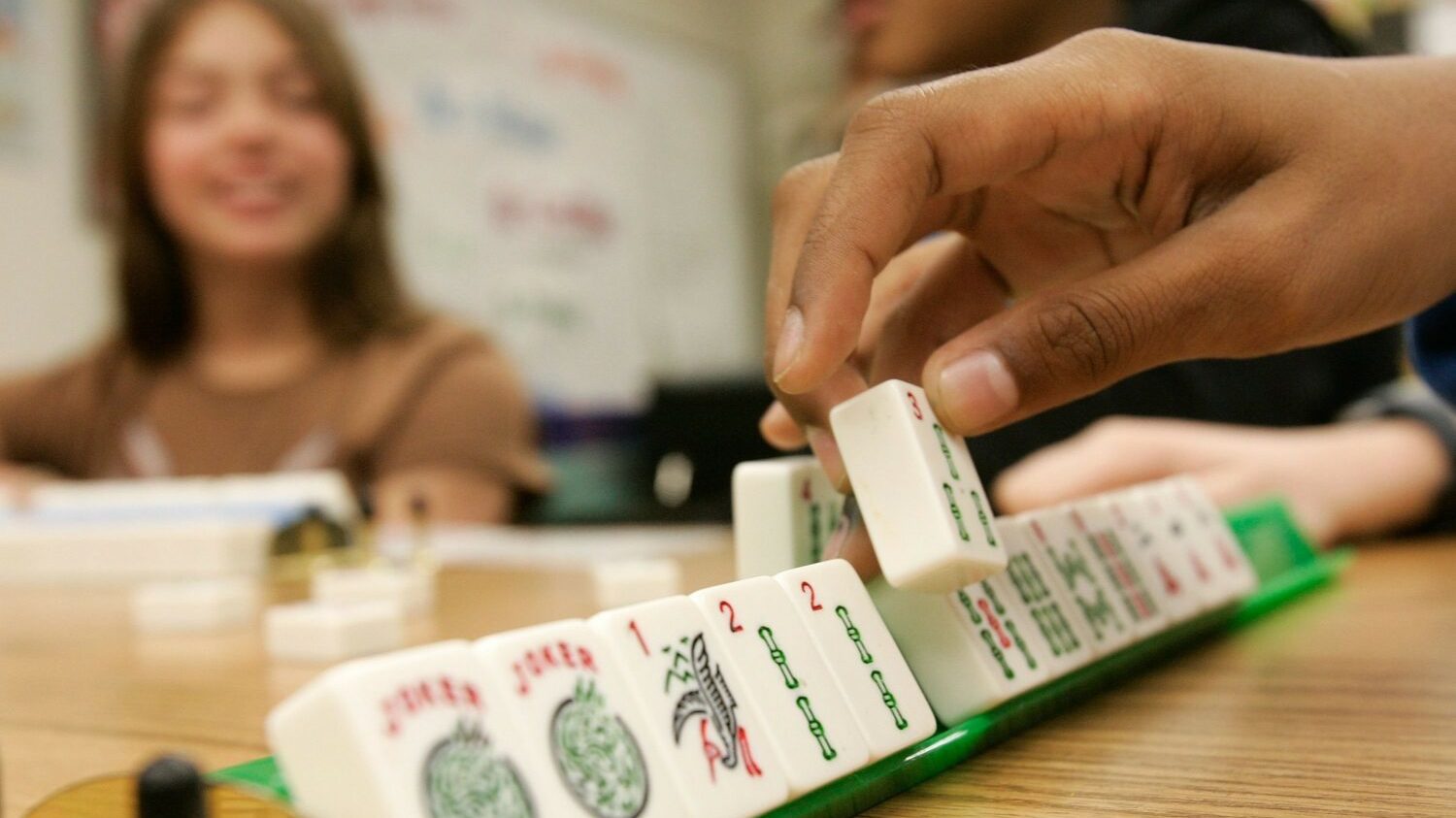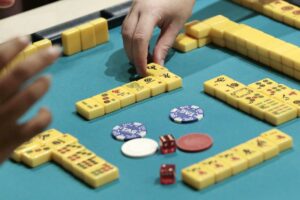
Patterns and Combinations: The Art of Forming Mahjong Hands
Mahjong is more than just a pastime; it's a captivating game of strategy, skill, and precision. Whether you're a seasoned player looking to enhance your abilities or a beginner taking your first steps in the world of Mahjong, understanding the art of forming Mahjong hands is essential. This article will take you on a journey through the mesmerizing patterns and combinations that make Mahjong an exciting, mind-stimulating experience.
The Fundamentals of Mahjong
Before we dive into the art of forming Mahjong hands, let's start with the basics.
Mahjong: A Game of Strategy and Skill
- Mahjong is a traditional Chinese game that dates back to the 19th century. It's a tile-based game that requires four players and a keen understanding of strategy.
- The game involves a set of 144 tiles, each featuring various symbols and characters. The goal is to create specific combinations or "hands" to win.
Understanding the Tiles
- The Mahjong tile set consists of multiple suits, each with its unique tiles. These suits include characters, circles, and bamboos.
- There are also honor tiles, which include winds and dragons. The combination of these tiles creates various opportunities for forming winning hands.
The Objective of Mahjong
- In Mahjong, the primary objective is to form a complete hand of 14 tiles. This hand can be composed of four sets (either a set of three tiles or a sequence of three) and one pair.
- The first player to complete their hand wins the round and collects points based on the tiles in their hand.
Exploring Patterns and Combinations
Now, let's delve into the heart of our topic - the patterns and combinations that lead to Mahjong victory. To succeed in Mahjong, you must learn to recognize and create these patterns.
Identifying Patterns in Mahjong
- Recognizing patterns is crucial for forming winning hands. Patterns can be categorized into two main groups: "sets" and "sequences."
- A "set" consists of three identical tiles (e.g., three sevens of characters), while a "sequence" is a run of three consecutive tiles from the same suit.
Crucial Mahjong Combinations
- There are several key combinations that can help you win in Mahjong. These include:
- Pung: A pung is a set of three identical tiles. Forming a pung allows you to claim the discarded tile and add it to your hand.
- Kong: A kong is similar to a pung but consists of four identical tiles. Forming a kong grants you even more points.
- Chow: A chow is a sequence of three consecutive tiles from the same suit. Chows are crucial for creating winning hands.
The Power of Honors and Bonuses
- In Mahjong, honor tiles (winds and dragons) are your ticket to bonus points. Collecting these tiles strategically can significantly boost your score.
Developing Your Mahjong Strategy
- The key to mastering Mahjong lies in developing a strategy that incorporates various patterns and combinations. Your strategy should evolve as the game progresses, adapting to your hand and the tiles in play.
Patterns and Combinations: The Building Blocks
Understanding the fundamental building blocks of Mahjong is essential for success. Let's explore these building blocks in detail.
Crucial Mahjong Hands
- In Mahjong, there are specific hands that are considered highly valuable and increase your chances of winning. Some of these hands include:
- All Pungs: Forming a hand with nothing but pungs can be a game-changer.
- All Chows: An all-chow hand is rare but incredibly rewarding.
- The Thirteen Orphans: This hand consists of 13 specific tiles and is the most challenging to achieve.
Winning Patterns
- Certain patterns have proven to be successful in Mahjong. Recognizing these patterns and working towards them can improve your gameplay. Some winning patterns include:
- Pure Straight: A sequence of tiles from the same suit without mixing suits.
- Mixed Triple Chows: A hand that combines chows and pungs can lead to victory.
- Full Flush: A hand composed entirely of one suit and honors is a winning combination.
Adapting to Your Hand
- In Mahjong, it's essential to adapt your strategy to the tiles in your hand. Being flexible and open to different combinations can lead to unexpected wins.
Strategies for Forming Mahjong Hands
Now that we've explored the essential building blocks, let's discuss strategies to help you form Mahjong hands effectively.
Tile Management
- Efficient tile management is crucial. Keep track of the tiles in your hand, those discarded by other players, and those that are still in the wall.
- Don't be afraid to discard tiles strategically, even if they are part of your original plan. Adapting to the game's flow is key.
Defensive and Offensive Play
- In Mahjong, you can adopt an offensive or defensive strategy. Offensive play involves actively pursuing high-scoring hands, while defensive play focuses on minimizing your losses.
- Knowing when to switch between these strategies is a mark of a skilled player.
Reading Your Opponents
- Pay close attention to the moves of other players. Try to anticipate their strategies and adjust your gameplay accordingly.
- Recognizing the tiles your opponents are waiting for can help you make informed discards.
Risk and Reward
- Mahjong is a game of calculated risks. Sometimes, you may need to make bold moves to secure a winning hand, while other times, playing conservatively is the right choice.
The Art of Waiting
In Mahjong, the concept of "waiting" is central to your success. Let's take a closer look at this critical aspect of the game.
Understanding Waiting
- Waiting in Mahjong means that you are one tile away from completing your hand. You need a specific tile to form a winning combination.
- Identifying your waiting tile and recognizing which tiles your opponents are discarding can lead to swift victories.
Types of Waiting
- There are two main types of waiting in Mahjong:
- Open Waiting: You openly declare the tile you are waiting for.
- Closed Waiting: You keep your waiting tile a secret, making it harder for your opponents to predict your strategy.
Exploiting the Waiting Concept
- Skilled Mahjong players can use the waiting concept to their advantage. By making it difficult for opponents to guess their waiting tile, they increase their chances of winning.
Advanced Strategies for Mahjong Masters
Now that you've grasped the basics, it's time to explore some advanced strategies that will take your Mahjong skills to the next level.
Tactical Discards
- Discarding tiles strategically is a subtle art. You can use discards to deceive your opponents about your waiting tile or to disrupt their strategies.
Mind Games
- Mahjong is not just about the tiles; it's about the players. Skilled Mahjong masters use psychological tactics to influence their opponents' decisions.
Observing the Wall
- The "wall" in Mahjong is the stack of undrawn tiles. Observing the wall can provide you with valuable information about the tiles left in play.
Counting Tiles
- Keeping track of which tiles have been discarded is a skill that can help you predict which tiles are still available and which are more likely to complete your hand.
Winning Streaks and Variance
- Mahjong is a game of variance. Even the best players will experience both winning and losing streaks. It's essential to remain level-headed and consistent in your approach.

